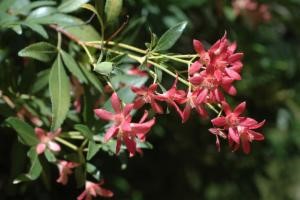
Dear Atlas of Living Australia friends,
As 2016 draws to a close, I’d like to take this opportunity to thank you for your ongoing support to the Atlas of Living Australia (ALA). It is you, as members of our community that have made our achievements possible and make us what we are today.
The end of the year is a time for reflection, and for the ALA 2016 has been very productive. Here are just a few highlights I’d like to share before we all head off on a well-deserved break over the holiday season.
Field data collection now better than ever
This year we proudly launched the first production release of BioCollect, our new data collection tool (replacing the old FieldData system), for collecting observation, survey and activity data. BioCollect is integrated with other ALA tools and allows you to easily create and manage projects and data collection surveys which provide a more seamless flow of biodiversity occurrence data into the ALA.
BioCollect supports the growing needs of both scientists wanting to engage the public in their research and the public wanting to participate in important scientific work. We are continuing to enhance and evolve the system in collaboration with our ever-growing community of users.
Continuing our global reach
Working with the Global Biodiversity Information Facility (GBIF), we continue to facilitate other countries to develop biodiversity information platforms using ALA e-infrastructure. The ALA’s open source platform is becoming a critical component within the GBIF network. Spain, France, Portugal, Costa Rica, Argentina, Brazil and Scotland have used ALA’s open infrastructure to help establish national biodiversity information portals, with several other countries investigating its use.
Indigenous Ecological Knowledge
In partnership with Indigenous communities working on country, we’re exploring the role of information management platforms in bridging the boundaries between traditional Indigenous ecological knowledge and western science, as well as empowering two-way participation in the sharing of biodiversity knowledge. This year we have made good progress to improve the relevance of the ALA website and software looking towards how using both knowledge systems can give a broader perspective on Australia’s amazing biodiversity.
Science Symposium
For the first time, the 2016 ALA Science Symposium was held interstate and hosted by one of our partners, the Department of Parks and Wildlife in Perth, Western Australia. We had a full program, with many stimulating talks. Thank you to everyone who helped make the 2016 ALA Science Symposium such a success. This includes presenters, moderators, ALA staff, and also all the participants who contributed through attending and creating such a lively atmosphere.
The 2016 Science Symposium was such a success that next year we’re committed to making it even better. To make this happen, we’re joining forces with several other National Collaborative Research Infrastructure Strategy (NCRIS) facilities to co-host a combined Environmental Symposium. Keep an eye out for details in the early New Year.
A milestone achievement
In September we reached a pretty impressive milestone, with over eight billion records downloaded from the ALA. We’re pleased to see that so many people are getting value from the ALA and it goes to the heart of our open access principle – collect data once, make it freely accessible and discoverable, and use it many times!
New features and improvements
This year saw the launch of many new features and improvements to the ALA. The redesign of species profiles and improvements to search functionality, additional features to better share data across other platforms, and new functionality to improve how users download data just to name a few. We also upgraded the names management infrastructure to allow much faster updates to taxonomy and implemented an important feature to allow record owners to verify and comment on annotated records. We’re always working on improving the ALA site and will continue to make improvements in the New Year. If you have any suggestions for future improvements we’re always open to feedback.
Streamlining data cleaning and modelling
Throughout 2016 we teamed up with the Biodiversity and Climate Change Virtual Laboratory (BCCVL) to run a series of workshops on how to get the most out of the ALA’s Spatial Portal and BCCVL’s modelling tools. The workshops were run at conferences and events around the country from Perth to Hobart and many stops in between. We also worked together to better integrate the two platforms so that users are able to find, investigate and clean ALA occurrence records using the tools in the ALA and then, at the click of a button, push this data set directly to the BCCVL ready to be used in models.
In the classroom
The ALA is a wonderful resource for the classroom, and in 2016 we were successful in gaining accreditation through the Teacher Quality Institute (TQI) to run workshops for primary and secondary school teachers in the ACT. We ran our first accredited teacher workshop in November with 17 participants. Teacher workshops were also run through the Australian Association for Environmental Education and the Science Teachers’ Association of Victoria. Keep an eye open for more teacher workshops early in 2017.
The National Research Infrastructure Roadmap is out
You may have seen that Department of Education and Training has released the Draft 2016 National Research Infrastructure Roadmap which is available on the Department’s web page. The 2016 National Research Infrastructure Roadmap will be used to support future investment decisions that will ensure Australian researchers can access world class major national research infrastructure. The ALA looks forward to the outcomes of this.
Again, I would like to thank all of our colleagues, partners, collaborators and contributors who have made these achievements possible. I would also like to give a special thanks to all ALA staff. The many achievements listed above are a direct result of our hard-working ALA family.
Finally, I wish you a safe and happy break over the holiday season, and I look forward to an even bigger 2017.
John La Salle
Director Atlas of Living Australia